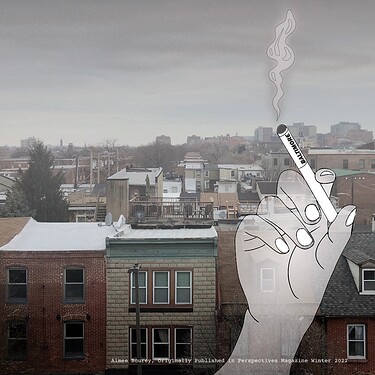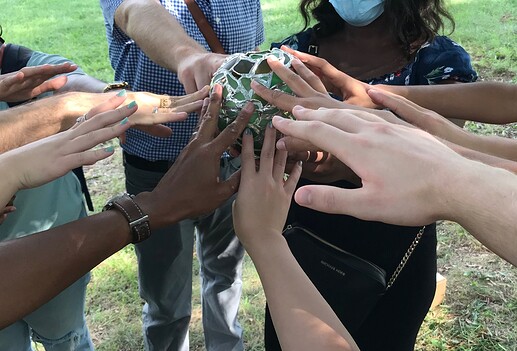Moving our society and infrastructure toward a zero waste future is one of the most serious and pressing ecological design challenges we face today. Over the last few months here in Baltimore, our collective has taken some exciting steps in this direction that we want to tell you about. We invite you to support and join us in this journey.
We’ve been working closely with the South Baltimore Community Land Trust (SBCLT), an organization fighting for “development without displacement” in Baltimore. SBCLT organizers have led the fight against waste incineration in the city, the single largest source of air pollution for city residents and a burden especially for low-income communities of color.
The zero waste coalition of community, labor, environmental, and academic organizations has been developing a vision for a resource park in south Baltimore, a space for alternative waste disposal infrastructure that will starve our toxic incinerator, create new jobs for local residents, sequester carbon, regenerate our air and soil, and produce healthy food. Central to this vision is a community compost facility we’re hoping to develop for the city of Baltimore.
Massive amounts of wasted and decaying food make Maryland’s landfills our largest source of methane emissions, producing even more greenhouse gas pollution than the natural gas industry. The community compost facility would be an important and inspiring alternative, developed in collaboration with local community stakeholders and national zero waste leaders. The idea won’t get off the ground however, without institutional and public support.
Through our Sustainable Design Practicum, a team of fifteen faculty and students from Johns Hopkins University and the Maryland Institute College of Art has been working since last August to support this campaign. The graphic above was made by our student Aimee Bourey. We’ve been gratified to see some signals of support at Johns Hopkins for this community vision, which cannot be realized without the support of such anchor institutions.
As some of the largest waste producers in the city, universities like Johns Hopkins are complicit in the public health crisis that incineration represents. But by pledging their support for the building of alternative waste infrastructure, they have the chance to put both their material footprint and their public leverage in the service of a community-led vision for a more sustainable future. We are excited about the momentum, and we’d appreciate your support in helping to make this happen.
Here are some things that you can do:
-
If you work on issues of waste and zero waste, we’d appreciate your insight and expertise; please join the new Zero Waste Community channel on our Commons to engage with this collaboration and help us develop these ideas and strategies.
-
Please read and consider signing this petition to Johns Hopkins University to support Baltimore’s movement for zero waste, developed by student organizers in the new Post-Landfill Action Network chapter at Johns Hopkins.
-
If you live in Baltimore, please respond to this survey on urban waste alternatives developed by our students, or consider encouraging institutions you know to pledge their waste tonnage to the community facility that the zero waste coalition is hoping to build in south Baltimore.
-
Follow SBCLT on Twitter, or our Sustainable Design Practicum weekly blog, for regular updates as we work to realize this vision together with SBCLT and our other allies and partners in these efforts.
-
Support the work of Baltimore Broken Glass, a Baltimore zero waste art workshop dedicated to working with waste glass materials, led by youth artisans from south Baltimore

